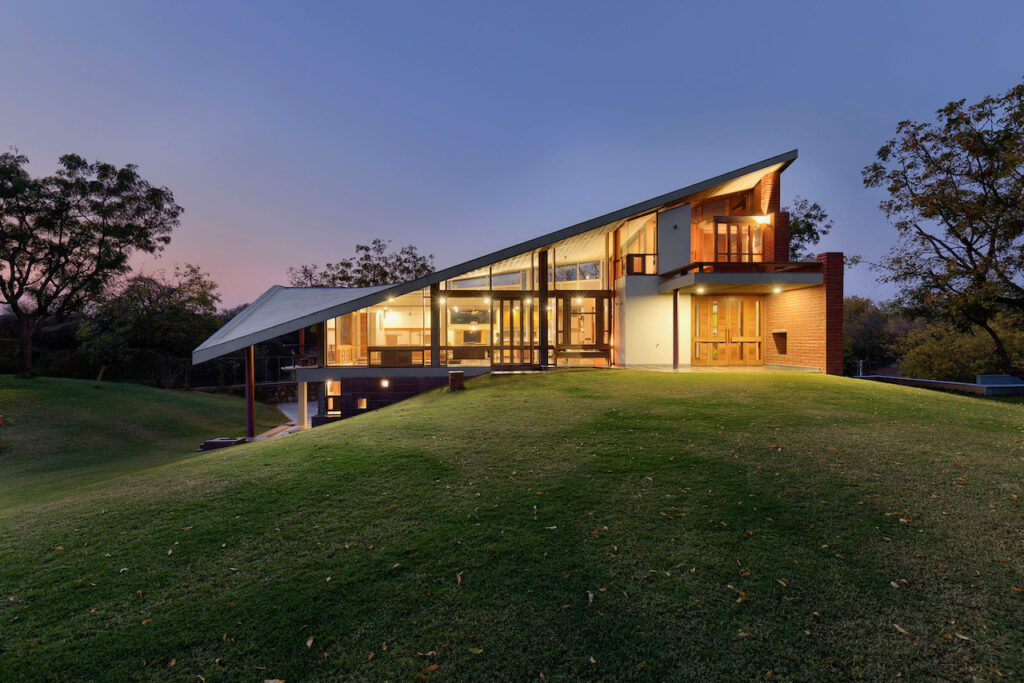
Located on the banks of the Sabarmati River near Ahmedabad, Northern India, sits a top-notch piece of modernist revival architecture. With its exposed brick and gorgeous interior, the Weekend House at Aalloa allows its residents to live the mid-century dream.
Sitting on a property shaped by the natural qualities of the landscape, the home was built in harmony with the original ecology of its surroundings.
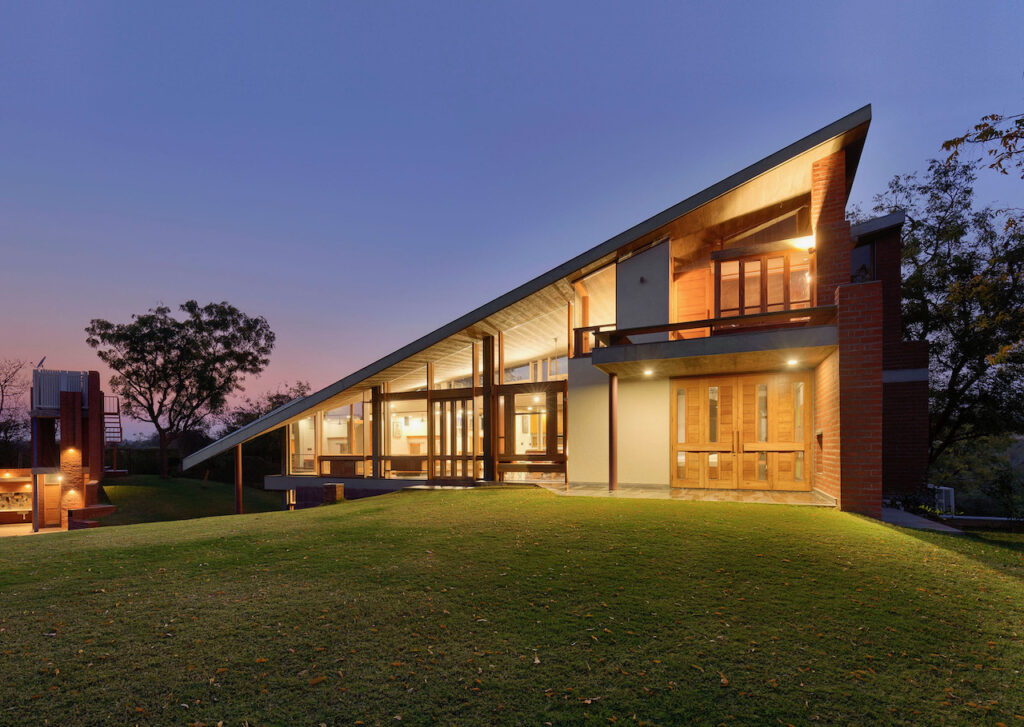
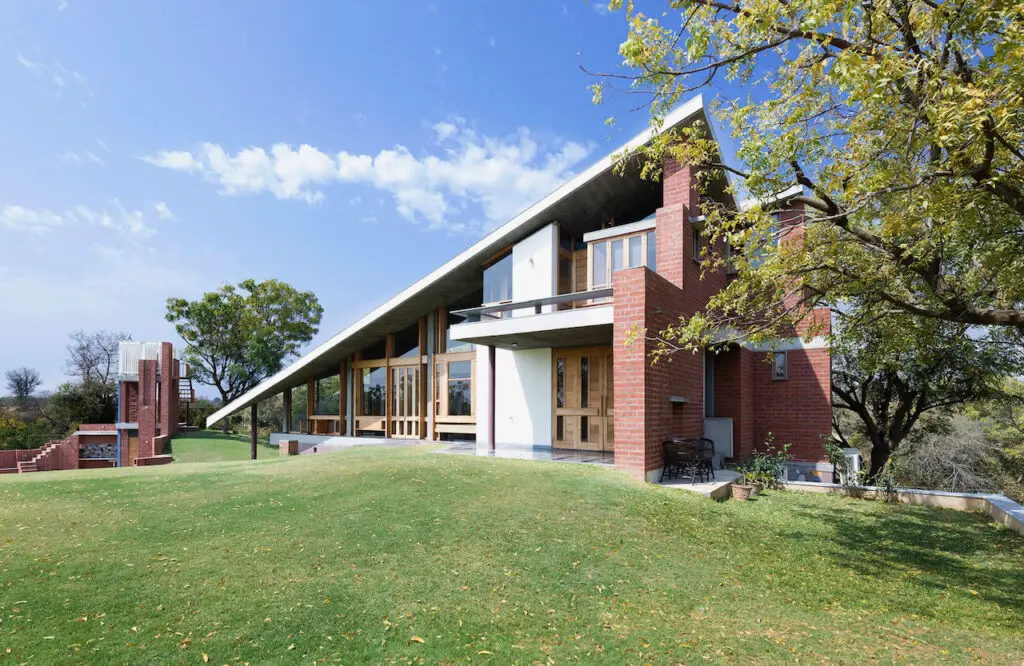
The main house, the swimming pool and the water tower are located on the highest point of the site, with most of the house’s windows facing the river valley. Perpendicular to the home, the swimming pool is carved into the adjoining slope. Further south, the masonry water tower rises from the opposite hilltop.
All three elements are constructed according to different coordinates, making the construction engage with the site three-dimensionally. Embedded in the original hillside, all the different floors and landings are accessible from varying levels of the undulating landscape. This engagement allows for “new ways of experiencing the exterior space and unravelling its majesty”.
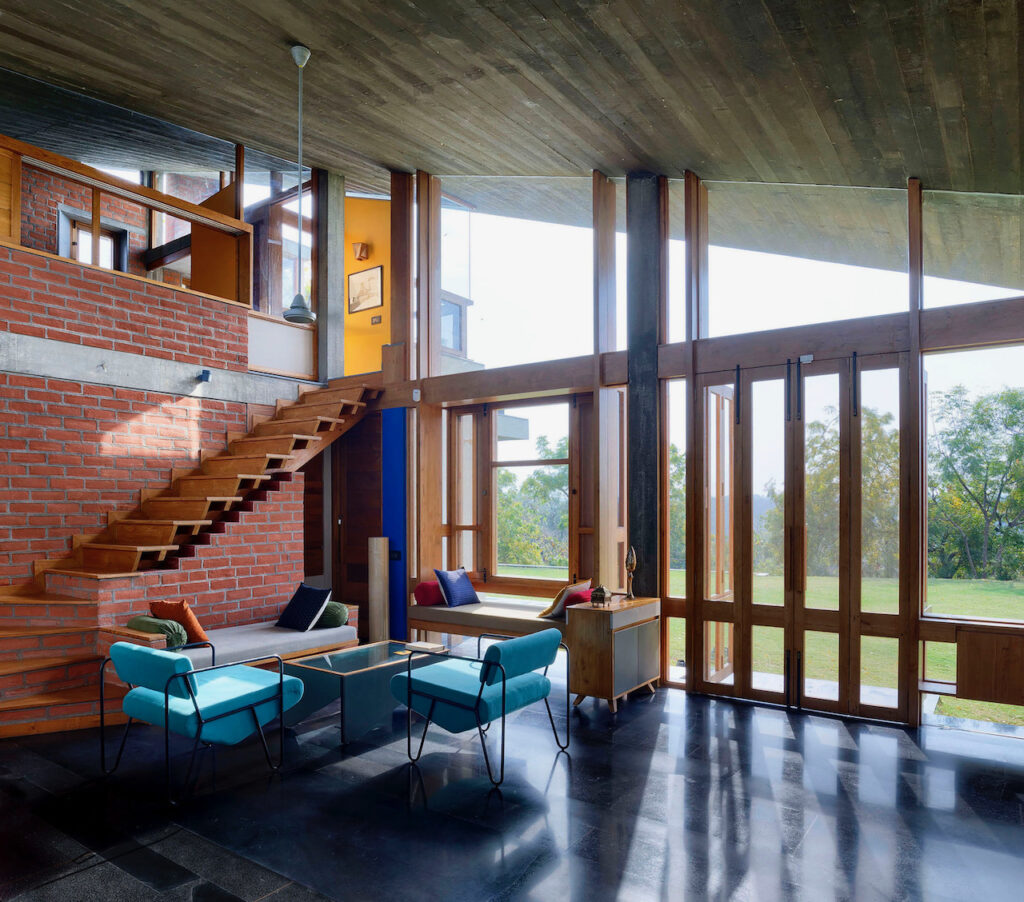
Stabilizing the home on its hilltop, a thick wall courses zigzag along the plateau’s edge. It carves out spaces that translate to rooms on the inside, accommodating service-oriented facilities like the kitchen, wash-yard, toilet, and dining room.
On the other side, a large and continuous “loggia-like space” is used for living, sleeping, and lounging. The most important spatial choice was to develop the internal organization “through a dialectic play between opposing conditions”; for example, between hillside view and riverside view, sunset versus moonrise, and service versus served space.
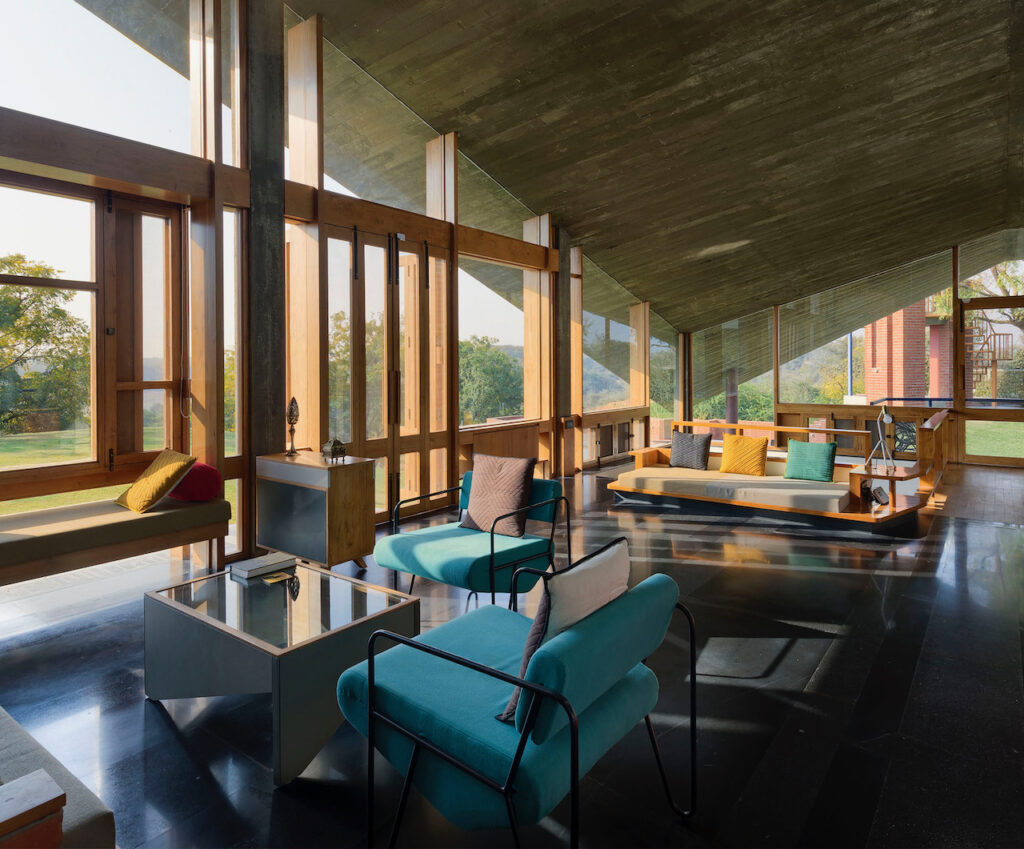
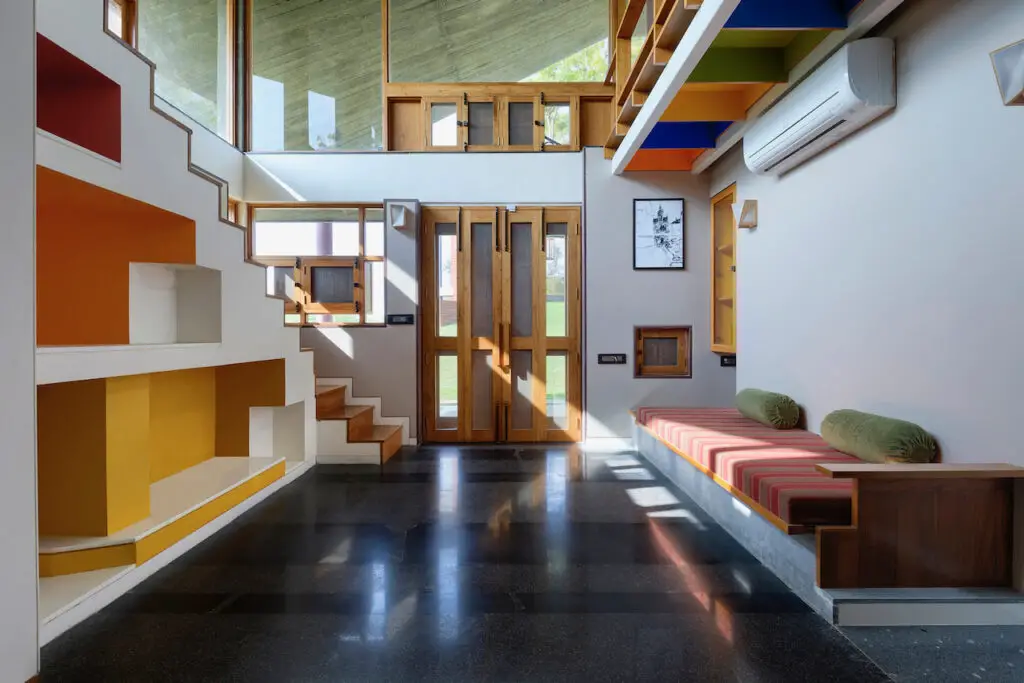
This dialectic process continues in the home’s relationship to the outside. While the piece’s modernist formal qualities and materials form a contrast with the green setting, the floor plan was imprinted into the natural topography.
In this way the resulting floors, walls and columns that form the core of the house are an extension of its geological foundation. The roof follows the natural inclination of the supporting slope.
Following the trajectory of the landscape, it reinstates the original shape of the hill, which was first partially sacrificed to accommodate construction. The hyperbolic paraboloid shape of the roof envelopes the entire home from above, adding massively to its spatial qualities.
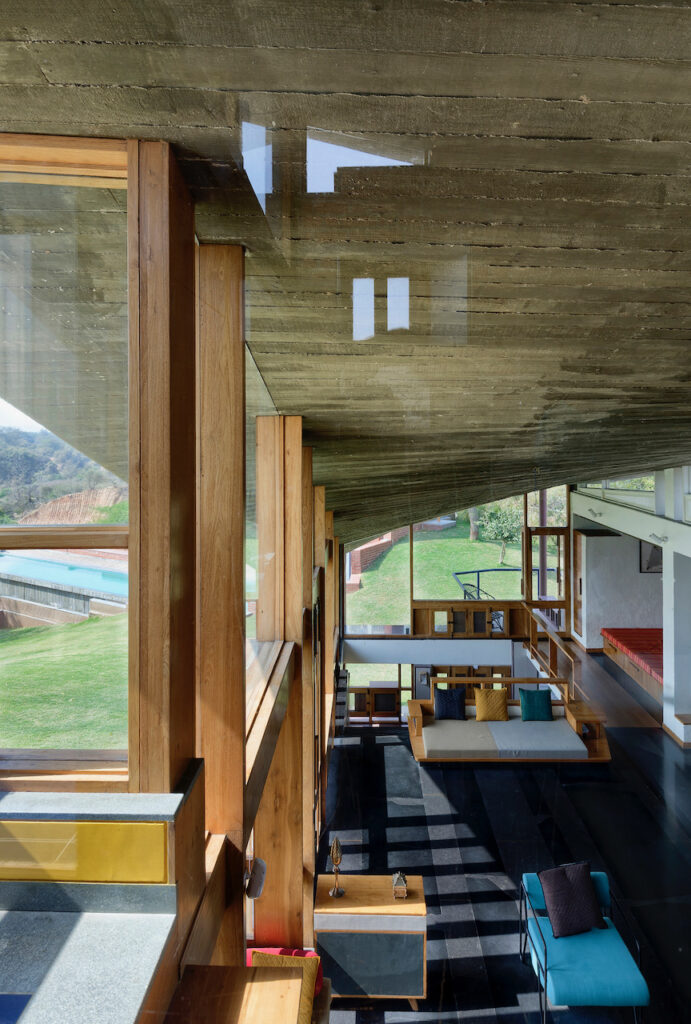
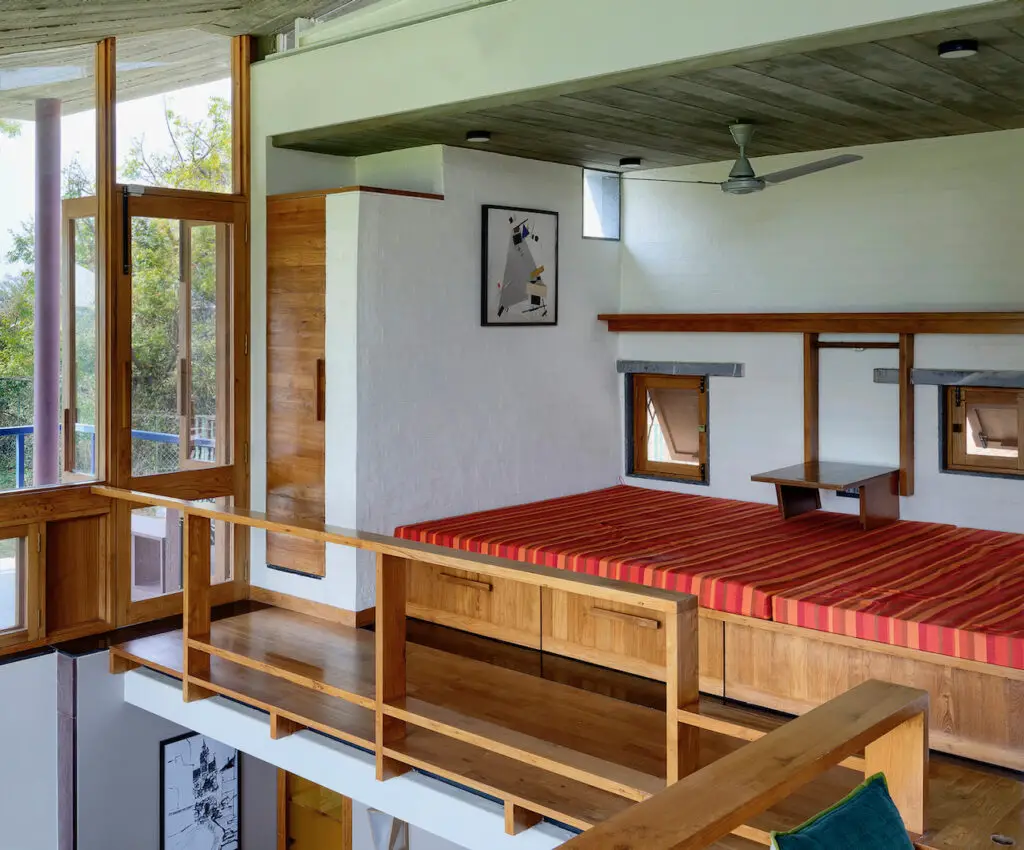
The project’s structural system and choice of materials strongly echo its mid-century influences – at first sight, the untrained eye maybe won’t even see that it’s brand new! The roof consists of reinforced concrete slabs, cast manually into pinewood shuttering. Doors and windows, all offering a different view of the landscape, are made of teakwood and glass panels. On the inside, large windowsills were installed to accommodate built-in furniture, creating areas for sitting and lounging.
Elsewhere, windows are left alone to maximize their primary function: to give way to a dazzling, spacious view. External cladding eliminates the need for visible, concrete protection of the foundation. Instead, the lower outside structure includes an artful mosaic of natural stone and granite. It all adds to the notion that the home literally grows out of the ground, in all its modernist majesty.
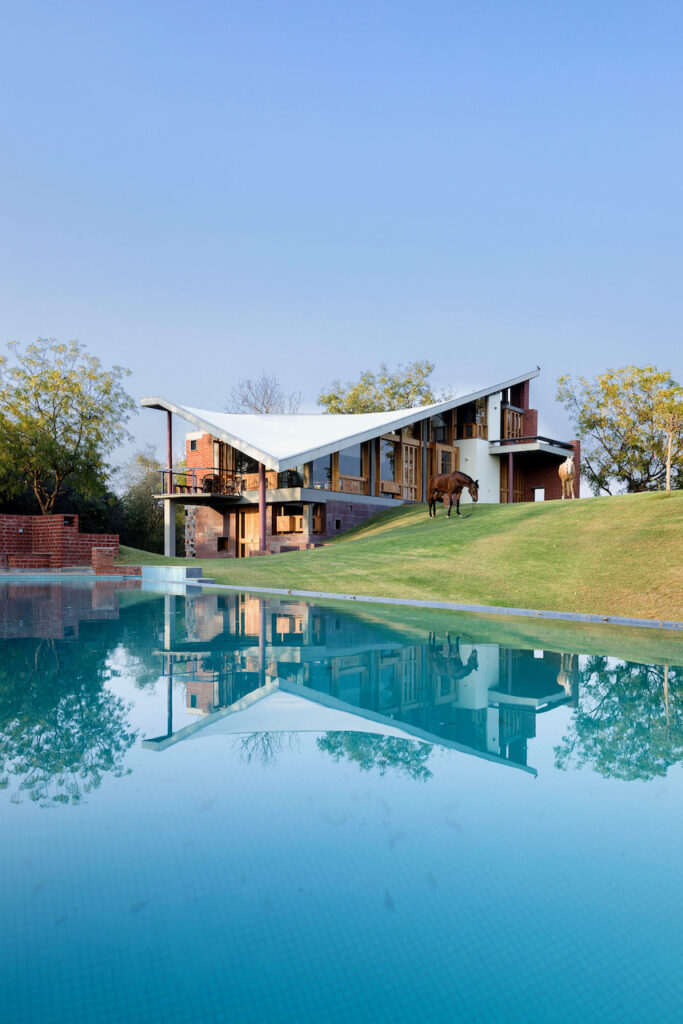
Photos by Rahul Zota